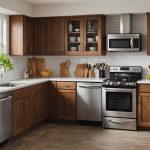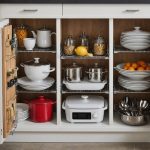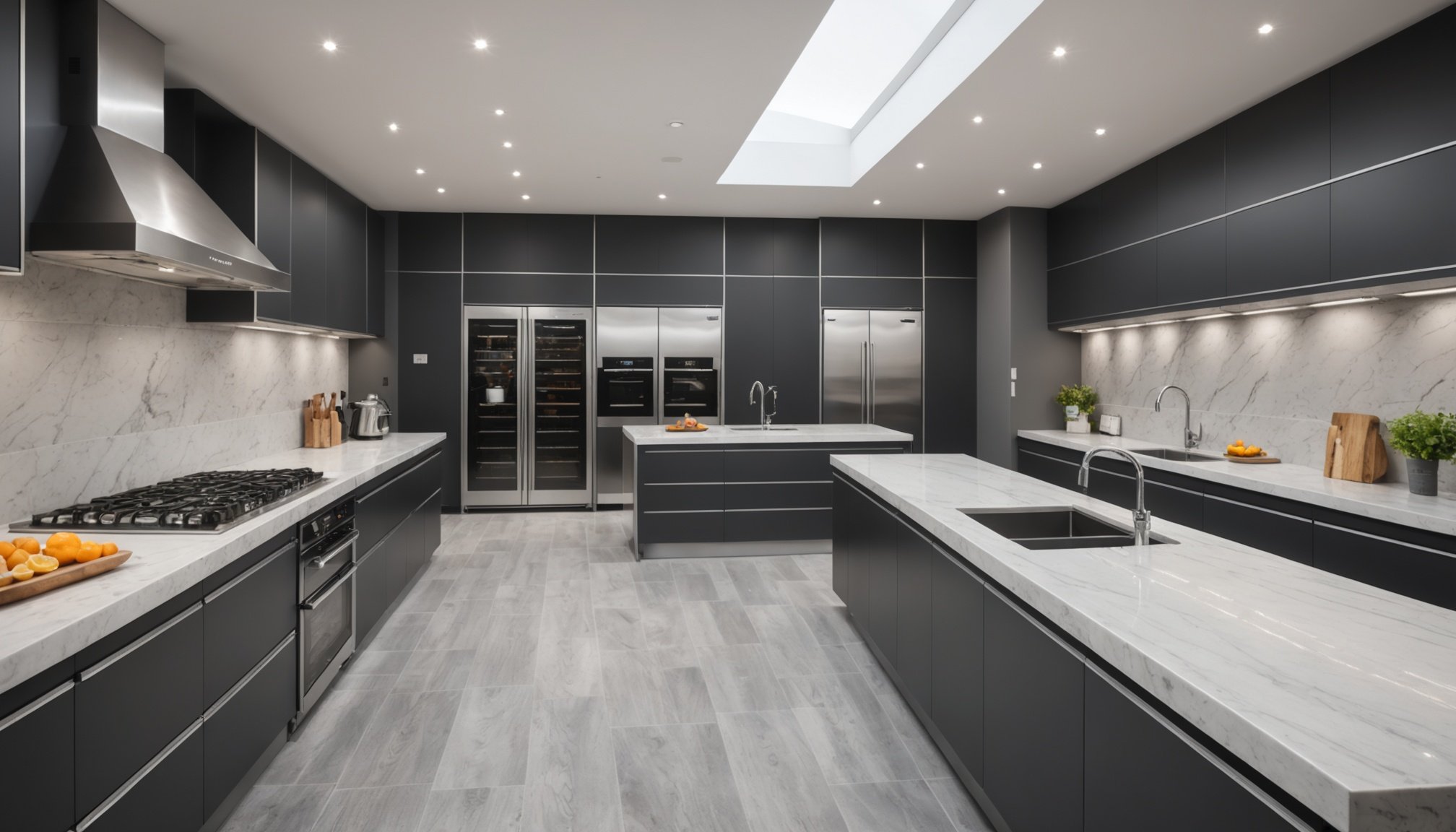In today’s fast-paced world, the kitchen is no longer just a place for cooking; it’s the heart of your restaurant’s operations. Whether you run a bustling eatery in London or manage a quiet bistro in the countryside, integrating technology into your kitchen is essential. This article explores how you can utilize smart software and other innovations to enhance efficiency, improve staff management, and ultimately elevate customer satisfaction. With the right tools, you can transform your kitchen operations into a seamless, energy-efficient machine that keeps pace with the demands of modern dining.
Understanding the Role of Technology in Your Kitchen
The integration of technology in your kitchen goes beyond simple gadgets. It encompasses a wide array of tools designed to streamline operations. From inventory management software to advanced cooking appliances, every piece of technology plays a vital role in enhancing the overall efficiency of your kitchen.
This might interest you : What strategies can you use to handle negative reviews and feedback effectively?
Firstly, consider how many restaurants still rely on outdated methods for inventory tracking and order management. These traditional approaches can lead to errors and inefficiencies that waste time and resources. By adopting modern software solutions, you can automate these processes. For instance, cloud-based inventory systems help you keep track of ingredients in real-time, helping prevent over-ordering and spoilage, which is essential in the food business.
Moreover, technology enhances communication among the staff in your kitchen. With digital order systems, chefs can receive real-time updates on customer orders, allowing them to prioritize tasks effectively. This immediacy not only saves time but also improves the overall flow of service. Consider how many orders can be misplaced or miscommunicated in a busy kitchen; employing technology helps to eliminate these risks, ensuring every customer enjoys their meal promptly.
Also read : How can you create a signature dish that becomes a staple of your UK restaurant?
Finally, the use of smart cooking appliances can significantly reduce energy consumption. Devices that adjust cooking times and temperatures automatically not only save energy but also ensure that your food is cooked to perfection every time. By embracing technology, you can create a more efficient and eco-friendly kitchen environment.
Choosing the Right Software for Efficient Kitchen Management
Selecting the right software is crucial for effective kitchen management. There are numerous options available, tailored to meet the diverse needs of restaurants and food businesses. Understanding your specific requirements will help you make an informed choice.
Firstly, evaluate your kitchen’s size and complexity. If you manage a large establishment with multiple locations, consider comprehensive restaurant management software that integrates staff scheduling, inventory control, and sales tracking. This all-in-one approach can save you from juggling multiple platforms and keep everything organized. On the other hand, smaller kitchens might benefit from more straightforward solutions focused solely on inventory management or staff scheduling.
Another crucial feature to look for is user-friendliness. Your staff should be able to adapt to the new system quickly to minimize disruption. Training sessions are essential, and choosing intuitive software can ease the learning curve. Moreover, some platforms offer mobile applications, allowing your team to manage tasks on-the-go, which can be particularly helpful during busy shifts.
Additionally, consider the integration capabilities of the software. A system that connects with your point-of-sale (POS) system can provide real-time data on sales trends, allowing you to adjust your menu and inventory accordingly. This data-driven approach enhances decision-making and helps streamline operations.
Lastly, invest in a solution that provides analytics and reporting features. Being able to track metrics such as food costs, labor efficiency, and sales performance can offer insights into your kitchen’s operations, enabling you to identify areas for improvement and drive profitability.
Enhancing Staff Efficiency and Customer Experience
Your kitchen staff are vital to your restaurant’s success, and their efficiency directly impacts customer satisfaction. Implementing the right technological solutions can help enhance their productivity and create a more enjoyable dining experience for your customers.
One way to improve staff efficiency is through digital order-taking systems. Instead of relying on handwritten tickets, which can be prone to mistakes, consider using tablets or smart devices to take orders directly from customers. This technology allows for quick modifications and real-time updates, reducing the chances of errors and speeding up service. Your staff will spend less time correcting mistakes and more time focusing on delivering excellent customer service.
Moreover, integrating a kitchen display system (KDS) can streamline communication between the front of house and back of house. Orders can be sent directly from the POS to the kitchen display, where chefs can view them in real time. This eliminates the need for paper tickets and minimizes miscommunication. With a KDS, your team can prioritize orders based on preparation times and ensure that food leaves the kitchen at the optimal temperature.
In addition to improving efficiency, technology can enhance the overall customer experience. For example, implementing a customer feedback system through tablets or mobile apps allows patrons to share their thoughts immediately. This real-time feedback enables you to address any concerns promptly, improving customer relations and loyalty.
Furthermore, consider loyalty programs and online ordering systems that integrate with your kitchen operations. Customers appreciate the convenience of ordering their favorite meals online, and your kitchen can prepare these orders in advance, ensuring timely delivery or pickup. This not only satisfies your customers but also optimizes your kitchen’s workflow.
Sustainable Practices Through Technology
As the global focus on sustainability grows, integrating technology in your kitchen can also help reduce your carbon footprint. Implementing smart energy management systems can help monitor and manage energy usage, leading to significant savings and a more eco-friendly operation.
Investing in energy-efficient kitchen appliances is one of the simplest ways to lower energy consumption. For instance, modern ovens and refrigerators are designed to use significantly less energy than older models. By upgrading your equipment, you can not only save money but also contribute to a more sustainable future.
Moreover, technology can aid in reducing food waste, an essential aspect of running a sustainable kitchen. Inventory management software can help you track ingredient usage and spoilage more accurately, allowing you to adjust orders accordingly. This minimizes waste and helps to keep costs down.
Additionally, consider adopting a farm-to-table approach facilitated by technology. Many software platforms can connect you with local farmers and suppliers, allowing you to source ingredients sustainably. By using fresh, local produce, you support the community and reduce transportation emissions.
Finally, engaging your customers in your sustainability efforts can enhance their dining experience. Use digital menus to highlight your sustainable practices, such as local sourcing or waste reduction initiatives. Customers appreciate transparency, and showcasing your commitment to sustainability can set your restaurant apart from the competition.
Incorporating technology into your UK kitchen operations is no longer a luxury but a necessity. From improving staff efficiency and enhancing the customer experience to adopting sustainable practices, the benefits are clear. By selecting the right tools and software, you can streamline your operations, making your restaurant more efficient and environmentally friendly.
As you embrace these innovations, remember that the ultimate goal is to create a dining experience that delights customers while optimizing your kitchen’s performance. With the rapid advancement of technology, staying ahead of the curve will allow your business to thrive in a competitive market. Embracing these changes not only enhances your kitchen operations but also sets the stage for future growth and success.











